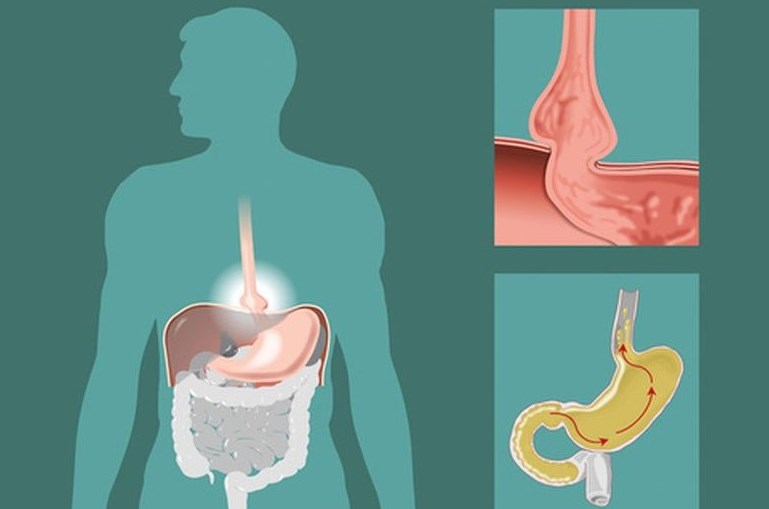- Hernia Mesh Lawsuit Guide - December 31, 2021
- 3M Earplug Lawsuit Guide - December 30, 2021
- Ford Fusion Lawsuit Guide - December 30, 2021
Individuals who’ve sustained severe injuries because their mesh implants failed can pursue a hernia mesh claim against surgical mesh manufacturers. C.R. Bard paid $184 million in 2011 to resolve over 3,000 hernia mesh cases, making it the highest hernia mesh litigation settlement thus far.
If you’ve been affected by a defective hernia mesh, this guide can help you. Continue reading to learn more.
Understanding Hernias
There are different types of hernias that a person can get, such as:
Abdominal Hernias

Abdominal hernias occur when fatty tissue pushes through muscular wall vulnerability. The abdominal cavity is enclosed by these muscle walls.
When a hernia arises in the stomach wall or groin, the ensuing sack bulging through the weak spot may contain intestinal pieces or fatty colon lining. Muscle and tissue make up the abdominal wall. Weak areas can develop in the abdomen region, allowing the material of the abdomen to expand through the weak point or herniate.
Inguinal hernias are the most prevalent type of abdominal hernia. The spermatic cord and testicles drop down the inguinal canal as a fetus grows and develops. The gap in the inguinal canal should shut tightly once the testicles have descended.
However, the muscles that connect to the pelvis may be compromised. If this area is strained later, the weakening tissues might allow a part of the intestine (or colon) to pass through the aperture. A bulge might form as a result, causing significant agony.
Men are more likely than women to have inguinal hernias. This is because men, unlike women, require a gap in the inguinal canal (to allow their testicles to descend).
Femoral hernias are more prevalent in women than in men. Femoral hernias can arise in the abdomen region that permits the femoral artery and vein to flow through the stomach. Femoral hernias are more common in women because their bones have a broader structure.
Anterior Abdominal Wall Hernias
Two pairs of muscles make up the abdominal wall. On either side of the body, these muscles include the internal and external obliques, rectus abdominis, and transversals.
Epigastric hernias are just a weak place in the abdominal wall between the belly button and sternum that occurs in the epigastric area of the abdominal wall. These types of hernias aren’t as prevalent, but they won’t go away until they’re treated. Epigastric hernias have a lot of unknown origins.
Umbilical hernias are caused by a weak area in the abdominal wall at the belly button in babies. Without surgery, these hernias typically close by themselves.
Spigelian hernias are hernias that form near exterior borders of the rectus abdominis, or abdominal muscle, via the Spigelian fascia. The primary cause of this hernia is compromised abdominal walls.
Incisions made during surgery can sometimes result in hernias. When a surgeon splits open the abdominal muscles to perform surgery within the abdominal cavity, a weak area is created. The restored abdominal muscles are left weak after the operation, raising the risk of herniation.
Stomach and Diaphragm Hernias

Hiatal hernias are different from other hernias in that they affect the stomach rather than the intestines. Hiatal hernias arise when a portion of the stomach slides through the gap in the diaphragm. The esophagus travels through the abdomen from the chest to this region.
Lower sections of the stomach and esophagus slip through the diaphragm and into the chest, causing hiatal hernias. The most prevalent type of hiatal hernia is this one.
When the stomach protrudes into the esophagus, this is known as a paraesophageal hernia. The stomach can practically fold in on itself, causing significant difficulties (volvulus).
Blunt force trauma, puncture wounds, and gunshot wounds are the most common causes of traumatic diaphragmatic hernias. These hernias might develop immediately after an accident or later down the line.
Lastly, there’s the rare congenital diaphragmatic hernia, which occurs when the diaphragm fails to fully form and shut during fetal development. Later in adulthood, this frequently results in problems due to underdeveloped lungs or lung problems.
Hernia Mesh Implants and Surgical Treatments
Surgical treatment is required for the majority of hernias. Native tissue restorations and surgical mesh treatments are the two most common surgical procedures for treating hernias.
Several techniques involving the utilization of the body’s own tissue are used to repair native tissue.
Also, there are mesh-based procedures, which include surgically implanting a hernia mesh to fix a hernia. In general, the sort of damage caused by a hernia, as well as the surgeon’s choice, both influence the type of procedure that will be advised and executed.
Dr. Francis Usher began studying the use of materials to heal hernia abnormalities in 1955. He researched Dacron, Teflon, and Orlon, but each of these materials had significant flaws. Dr. Francis then discovered a new material known as Marlex. It appeared to offer the attributes he was looking for, so he began developing a woven mesh product out of it.
Dr. Usher reported his approach of utilizing a permanent polypropylene mesh to cover the hernia deficiency to trigger tissue growth, thereby reinforcing the abdominal wall and preventing recurring hernia development.
The Lichtenstein repair, often known as the tension-free approach, established this technology thirty years later. It quickly became the most popular form of hernia treatment.
Originally, scientists thought that meshes that were thicker and stronger would cause fibrosis. This was not the case, as the larger and stronger meshes are more prone to problems like infection, corrosion, and immunological reactions.
Doctors began to use big pore, lightweight meshes after a while. Despite the fact that these lighter meshes were an upgrade, they still caused an alarming number of significant problems many years following the surgery. In recent years, several of the newer meshes have even been recalled.
The Complications Associated With Hernia Mesh Failure

Hernia mesh symptoms were so severe in some patients who filed suits, they required at least one more surgery to correct their problems. Others required more than one hernia repair surgery. Many patients also allege that their symptoms persisted following corrective surgery.
If you’ve had one or more of the hernia mesh issues mentioned below, and your physician suggested revision surgery, you may have a case for a lawsuit.
Here are the most common complications that patients experience after receiving a defective hernia mesh:
Pain: Pain is one of the primary consequences of hernia mesh failure. It’s often caused by extensive scar tissue, mesh shrinkage, nerve damage, or inflammation.
Bowel obstruction: Scar tissue caused by the implant could block the bowels, leading to bloating, vomiting, constipation, and nausea. If this happens, immediate medical attention is required.
Bulging: Bulging around a hernia site could be a sign of hernia reoccurrence. But it might be due to an infection or a dislodged mesh as well.
Reoccurring hernias: If your mesh fails, it can move, break, or degrade from the initial surgical site. When that happens, it’ll likely cause the hernia to return.
Infection: Infections occur when bacteria build up on the mesh implant. As a result, it causes swelling and tenderness around the surgery site. You could also experience fatigue, fever, and flu-like symptoms.
Testicular or groin pain: You may feel testicular or groin pain due to a failed inguinal hernia.
Sexual complications: If a hernia mesh punctures a nerve or causes inflammation, it can trigger impotence.
The Dangers of Hernia Mesh Defects

If your hernia mesh fails, it could have devastating consequences. Below are some of the primary issues associated with mesh failure:
Breakage: When a hernia mesh breaks, it leads to reoccurring hernias. It also triggers pain and other health issues.
Migration: If a hernia mesh migrates from the initial point of surgery, it’ll protrude from the tissues and may cause organ perforation. Migration may also lead to hernia recurrence and pain.
Infections: You may experience an infection as a result of mesh failure. This is a very common complication that typically results in surgical removal of the mesh.
Rejection: A mesh could cause inflammation and an immune response, therefore, your body will reject it. You’ll know that your body is rejecting the hernia mesh if you experience redness, pain, and flu-like symptoms.
The Problem With Polypropylene Hernia Mesh Products
In addition to the problems listed above, there are other dangers associated with hernia mesh products—especially polypropylene mesh. Polypropylene has been used in procedures for many decades, however, it’s controversial.
This petroleum by-product is used in items like fishing lines. Polypropylene can trigger an immunological response when it’s inserted into the body, creating dangerous infections. It can also degrade the body.
If you received a hernia mesh that contained polypropylene, it’s a huge risk factor. You could benefit from filing a lawsuit and receiving compensation for your pain and suffering.
What Causes Hernia Mesh Failure?

Well, there isn’t one cause of failure. Normally, there’s a mixture of factors that lead to it. The following list details a few of the primary factors that may trigger mesh failure:
Medication, Treatments, and Health Conditions
A hernia mesh might fail due to a health condition, medication, or cancer treatment. However, you can minimize your chances of mesh failure by eating healthy, managing your weight, and not smoking.
Health issues such as lung disease, anemia, malnutrition, type 2 diabetes, and arthritis could trigger mesh failure. In addition, taking steroids or undergoing chemotherapy and radiotherapy could also cause complications.
Poor Surgical Technique
If your surgeon doesn’t do a good job on your procedure, it could cause hernia mesh failure. Poor surgical performance or a lack of experience creates problems down the line. Generally, hernias reoccur after open surgical techniques, rather than laparoscopic techniques. However, laparoscopic surgery requires more skill, and to achieve the best results, your surgeon would need a high level of training.
Product Design
The design of the hernia mesh could be a contributing factor to failure. For instance, if the mesh material has tiny pores or is too heavy, then there’s an increased chance that it’ll cause an infection. Furthermore, if the mesh is too small to completely cover the hernia, it’s prone to shrinkage. Unfortunately, that occurrence leads to mesh failure.
In other situations, a mesh may not be effective in stimulating tissue ingrowth. Tissue ingrowth is vital for keeping the material in place and creating strong repair.
Compensation for Mesh Lawsuits

Economic variables such as past and future medical costs, as well as income loss, are included in defective hernia mesh lawsuits. Loss of life quality, loss of companionship, and suffering and pain are examples of non-economic damages.
Economic Losses
Some hernia mesh issues necessitate more than one operation to resolve. In addition, some traumas, such as infections and severe pain, may require lifelong therapy. These medical expenses mount up. If you were the primary income provider in your home and are unable to work due to severe groin discomfort caused by failing mesh, you may be entitled to recover lost earnings from the past and future.
Non-Economic Losses
Psychological and emotional losses are non-economic losses. After a hernia mesh operation, one complainant’s lawsuit alleged that eating was unpleasant, and he developed sexual issues. These issues lead to a decrease in life quality and enjoyment, as well as emotional distress.
Punitive Damages
In circumstances when the jury deems the defendant’s conduct to be extremely careless or hurtful, punitive damages may be awarded in addition to compensatory damages for economic and non-economic damages. Punitive damages are intended to punish the offender and deter such actions in the future.
Claims in the Hernia Mesh Lawsuits

Plaintiffs in hernia mesh lawsuits say that the defective medical device manufactured by corporations failed, resulting in severe injuries that necessitated hernia repair surgery.
Patients are suing drug companies for damages such as lost income, medical expenditures, diminished quality of life, and pain and misery.
Here are some of the specific claims filed in the lawsuit:
- Design flaws in the product
- Failure to educate patients and clinicians about the danger of mesh failure and consequences due to inadequate product labeling.
- Product manufacturing flaws
- The plaintiff’s doctor (who implanted the defective medical device) committed malpractice
Frequently Asked Questions Regarding the Hernia Mesh Lawsuit
Below are the most common FAQs regarding the hernia mesh lawsuit:
Question: Is there a hernia mesh class action suit?
Answer: Solo suits, not class actions, are filed by people who have been injured by hernia mesh. Judges have merged thousands of individual injury claims into big groups known as multidistrict litigations, or MDLs, to expedite the court proceedings and save money.
Question: How long does a hernia mesh lawsuit take to settle?
Answer: Thousands of hernia mesh cases have been brought in state and federal courts around the country. Due to the large number of claims, the courts have established unique procedures to address all of these cases in federal and state courts. The cases could take years to settle because they are being organized in this way and regarded as sophisticated, nationwide litigation. However, an experienced mesh lawyer may be able to help you expedite the case.
Question: Has there been a hernia mesh recall?
Answer: Both yes and no. There are many types of hernia mesh implants available, and each producer may offer more than one. For different reasons, the FDA and some manufacturers have only announced a hernia mesh recall for particular types of hernia mesh implants.
Also, the FDA has not issued a recall for the bulk of hernia mesh implants on the market. An FDA hernia mesh recall may be helpful in some cases, but it does not mean you have a claim for damages. It’s best to contact a mesh lawyer if your hernia mesh is causing you discomfort.
Final Thoughts on the Hernia Mesh Lawsuit
The complications associated with a faulty hernia mesh are serious. If you’ve experienced any of the symptoms above after a hernia mesh operation, contact a lawyer immediately. You could be owed compensation due to pain and suffering, as well as medical expenses.
Recommended reads:

